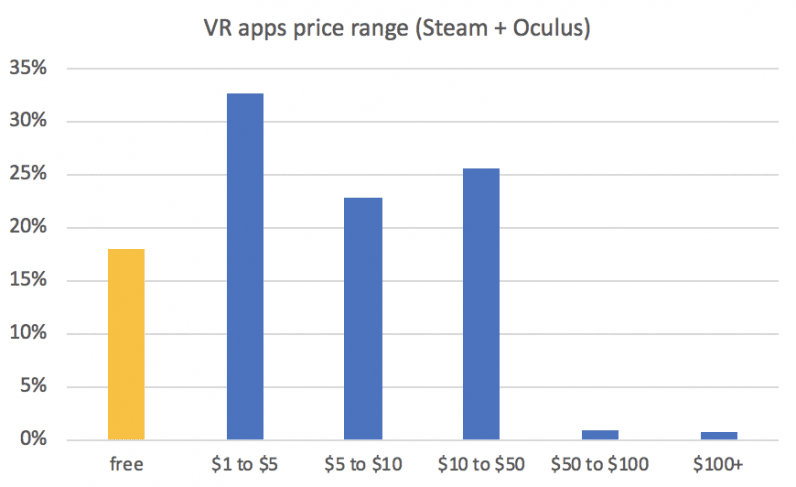Over the past 18 months, I have talked to over a hundred VR/AR content creators, from large teams to indie developers working from their garage. I like to understand the vision behind their creation, which leads to passionate responses. Invariably, these creators are incredibly tech savvy and passionate about the design and development of their content.
My next question is generally around the go to market strategy and how their VR/AR app will be promoted. Invariably, creators are caught in the hype and excitement of building great content, and a tad unrealistic about this aspect of their business. Most of the answers I get are in the lines of ‘we will publish it on the Steam/App Store for $19.99/$1.99.’
While this sounds like a simple and lucrative proposition, the reality is that less than 1 percent of developers actually pull that off. Being able to sell content upfront is becoming harder and harder, at times where so much free content is available, and most digital media has been commoditized. Asking for payment upfront requires a huge marketing budget to get the name of the app out there and build the trust necessary for players to open their wallets. Even premium platforms like Netflix or Spotify offer free trials.
Instead, my advice is always the same: release the app for free and monetize later. But most VR/AR developers would rather publish a paid app, because it is less headache and doesn’t require a monetization strategy. Also, the VR/AR market is still nascent, and creatively, doesn’t lend itself well to traditional advertising. As a result, most VR creators stick to paid apps.
Here is the thing: I am not against paid content. Paid content was necessary to jumpstart the industry, and is still fine in 2019, when the total addressable market is still small. There is no doubt that it works wonders for some very specific type of content – such as the very premium publishers that you already trust.
But to grow exponentially, the industry need to move past paid content: paid doesn’t scale. We need more users downloading more apps, and sharing them seamlessly. Paid content creates barriers to entry against virality, and alienates users who just want to ‘try before they buy.’
So, I do not believe that releasing a paid VR or AR app is a great way to prepare to scale and execute on a 5-year vision. In other words, want to build a killer app? Make it free.
Detractors are quick to point to Beat Saber, Superhot, or Job Simulator, that have generated multi millions in sales. In a recent podcast, Tipatat from the VRFund shared that over 60 titles made over $1 million in sales. But there are already over 10,000 apps on the market, so the odds are not in your favor.
According to internal research at my company, 27 percent of VR apps on Steam/Oculus cost over $10, 55 percent cost between $1 and $10, and 18 percent are free. The biggest successes mentioned above are all in the $20 range. Today, paid apps are ruling VR. But this is a direct consequence of the VR market being nascent, and won’t be the case for long.

Additionally, VR won’t be limited to games. Already today, we are seeing more education, social, commerce, and entertainment apps being developed. Historically, the business model for these apps has been different – users are even less likely to buy these apps upfront.
These two natural transitions – towards a more mature market, and new verticals – mean that over the next few years, there will be less demand for paid apps. The ratio of paid to free apps (today about 5:1) will decrease rapidly, and to keep monetizing efficiently, developers will have to rely on alternative business models.
How do I know this? Just by looking at what happened on the mobile market over the last decade. When the App Store launched in 2008, 75 percent of apps were paid for. A year later, this dropped to 40 percent, then 30 percent, until it stabilized around 8 percent in 2018. That’s a 900 percent drop over 10 years. Today, in terms of revenue, paid apps account for less than 4 percent of the global app market. 65 percent are attributed to app purchases, and 30 percent to advertising.

Most content creators I talk to have a very detailed long term vision of how their app is going to affect millions of users. To be successful over time and scale, that vision needs to be extended into the business model, marketing, and monetization strategy. A game developed to be sold for $19.99 on Steam cannot easily be set as free and expected to generate revenue. Monetization, whether it is through advertising or in-app purchases, need to be carefully thought.
Get the TNW newsletter
Get the most important tech news in your inbox each week.






